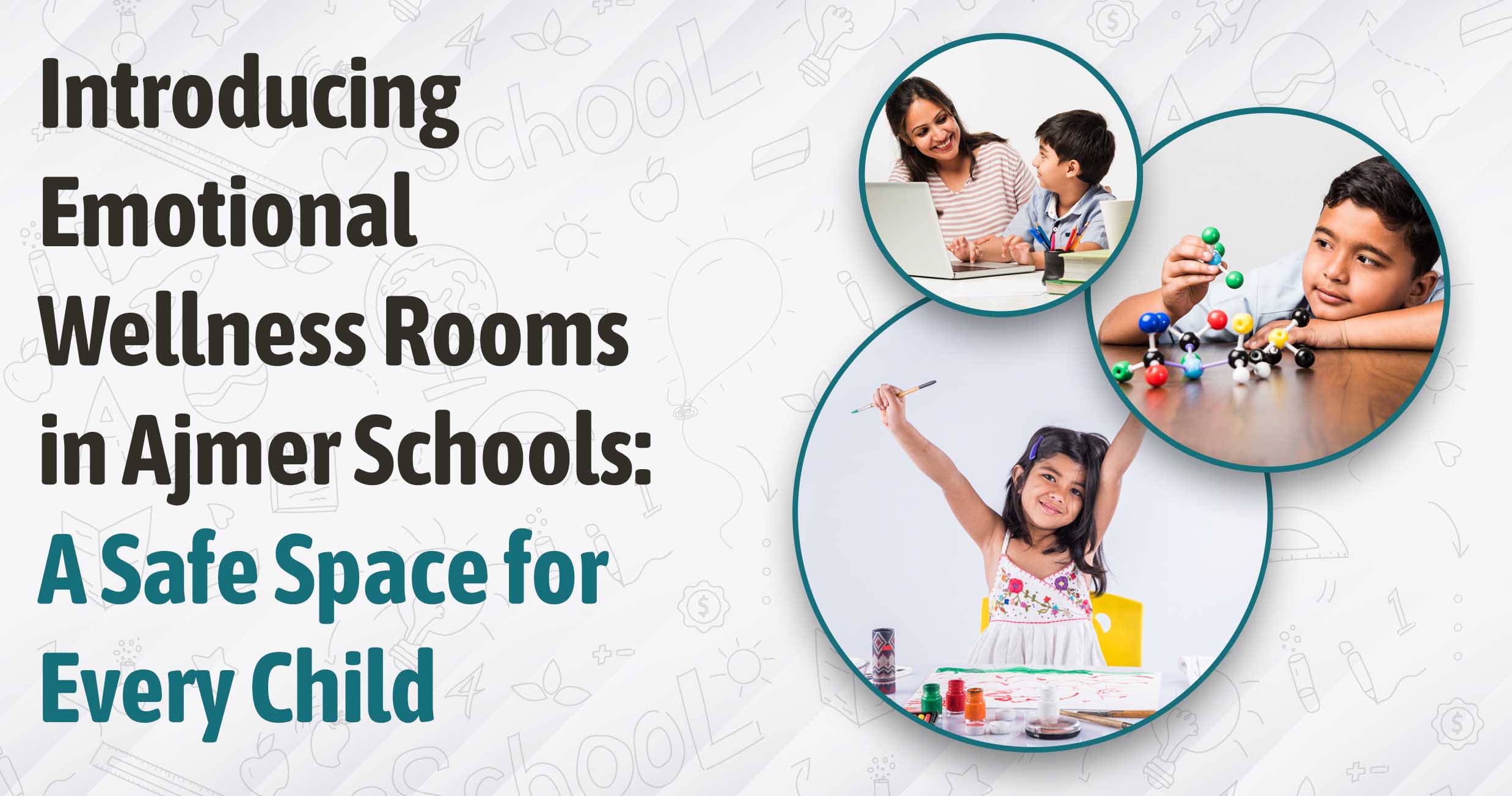
We’ve all cringed as parents watching our children navigate their firsts – first day at school, friendship fallout, and exam stress. And as we worry about grades and achievement, something else might escape our attention: the emotional experience of school.
A silent yet undeniable transformation has been brewing in the Indian education space recently. Move over smart boards and digital classrooms since you’re now competing with something more personal – Emotional Wellness Rooms. This long-awaited revolution has come, and Ajmer, with its heritage and changing education standards, has joined too.
It’s like the emotional version of the school infirmary. Much like a nurse’s office to address scrapes and fevers, an emotional wellness room gives children a space to retreat, reflect, and, often, refocus when their emotions run high.
It’s not a classroom. It’s not detention. It’s not therapy.
It is a safe, supervised, nonjudgmental place for ensuring emotional wellness in schools for children – a quiet nook with bean bags, soothing visuals, breathing options, sensory items, or just silence.
Kids can jump in whenever they’re feeling overwhelmed, anxious, blue, pissed off, and even simply “not okay.” It’s a lesson they learn and carry forward: It’s okay to stop.
Because childhood is not what it once was.
Today’s children have homework, after-school activities, peer pressure, social media, and constant expectations to perform. Throw in the emotional shock waves from the pandemic, and it’s no wonder that mental health in Ajmer schools – and across the country – is finally taking center stage.
Anxiety, low self-esteem, mood swings, burnout – these are no longer “big city” problems. They’re knocking at the doors of child-friendly schools in Ajmer too. And the answer can’t continue to be silence or stigma.
Emotional wellness rooms provide a preventative, early response. They don’t wait for a crisis. They intervene before the cracks are intense.
It isn’t just the um room that makes these spaces work, but what they represent – a school culture that listens. It is a message to every child: “We got you. We hear you. We care.” Trained counselors or health mentors frequently staff these rooms. Students are given tools to apply when anxious, like self-regulating or keeping a feelings journal, practicing mindfulness, and talking through concerns.
It also contributes to the development of emotional vocabulary. When a 10-year-old can express, “I feel frustrated because my friend won’t listen to me,” instead of throwing a tantrum – that also means practicing emotional intelligence.
And there’s that further indirect good: it teaches empathy. For children who witness others using the wellness room without embarrassment or need to whisper, such behavior can help make mental health conversations normal. It teaches them to care, not condemn.
We’ve always judged success by a mark. But emotional resilience? It’s what gets our children through life’s unsteady turns.
Schools have started recognizing that safe educational spaces are as crucial as math labs and music rooms. They could be even more critical. Because a child who feels emotionally safe learns better, gets along better, and does better.
And this is where student mental health programs enter the curriculum – not as a one-time workshop but as a way of doing business.
From emotional check-in charts in classrooms to peer-buddy systems, morning gratitude circles, and wellness rooms, Ajmer’s a greater move towards holistic education.
A lot.
Make it normal to discuss feelings. Rather than what your child did today, ask how they felt today.
Model emotional regulation. Let them see you stop, think, and take a slow, deep breath before you spew that angry reaction.
Back to what the school is doing, if your child’s school implements student well-being programs or emotional safety protocols, advocate for them. Ask how you can participate. Watch the signs. Withdrawal, irritability, sleep, and eating alterations are not “just phases.” They’re windows into your child’s emotional world.”
And for good reason: mental health isn’t about getting rid of problems but building the capacity to handle them.
Nowadays, an increasing number of CBSE schools in Ajmer focus on learning to concentrate on the emotional safety of the kids and academics. And it’s heartening to see emotional intelligence is not being dismissed as fluff but treated as foundational.
We are seeing a beautiful evolution in how schools regard our children – not as rosters of report cards but as human beings with stories, struggles, and spirits.
Leading this change is Satguru International School (SIS), Ajmer – a school that offers challenging academics coupled with emotional nurturing. In an era when wellness and emotional intelligence are at the forefront, it’s blazing a trail. Raising strong minds starts with soft hearts.
In short, emotional wellness rooms are not a fad – they’re a lifeline. A warm hug in a cold moment. A pensive pause in the middle of a loud day. A safe space in a busy world.
As parents, educators, and a community, let’s root for the change. Let’s raise children who are not only innovative but grounded. Not only smart but self-aware.
Because every child deserves more than an education – they deserve to feel safe, seen, and supported.